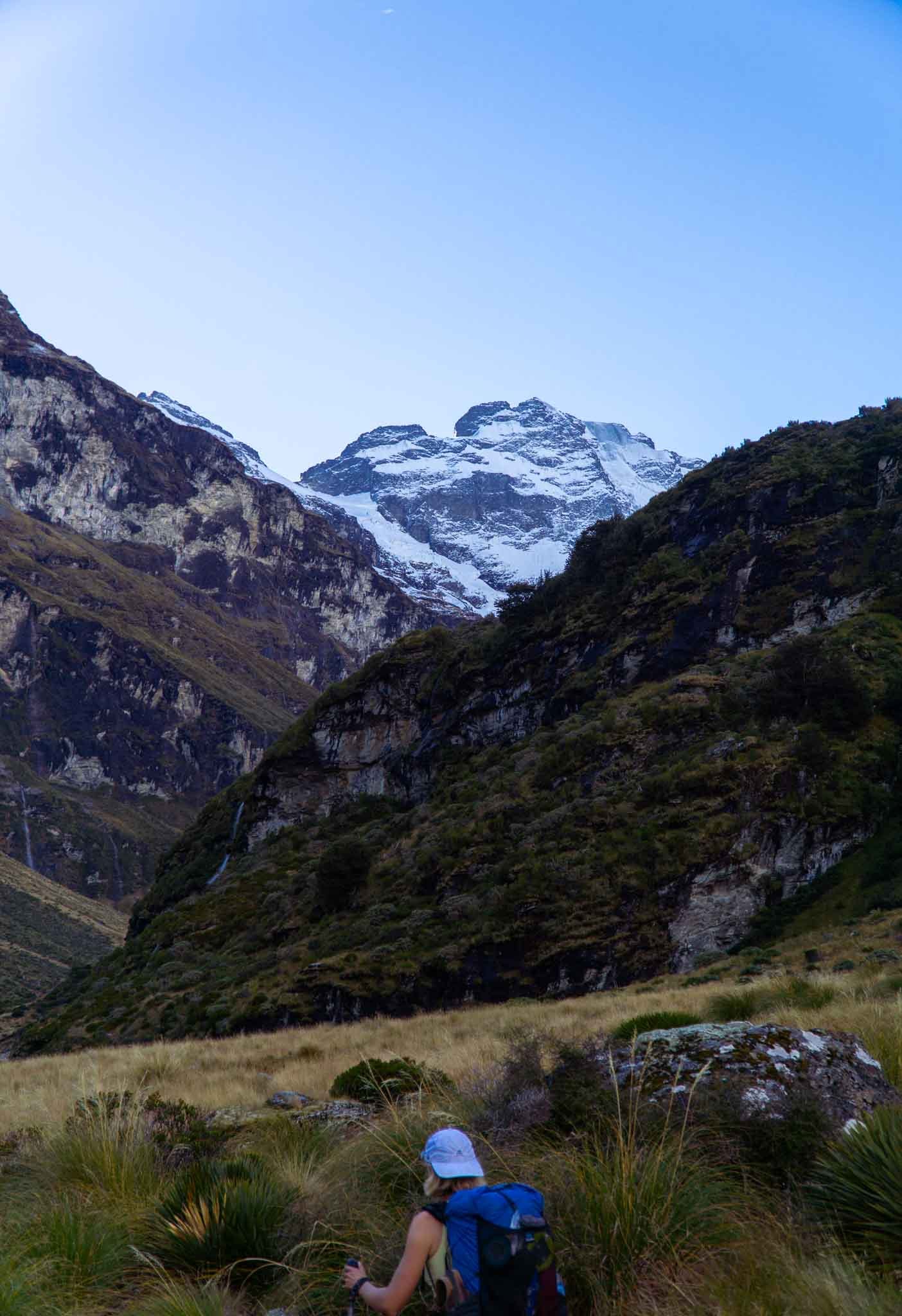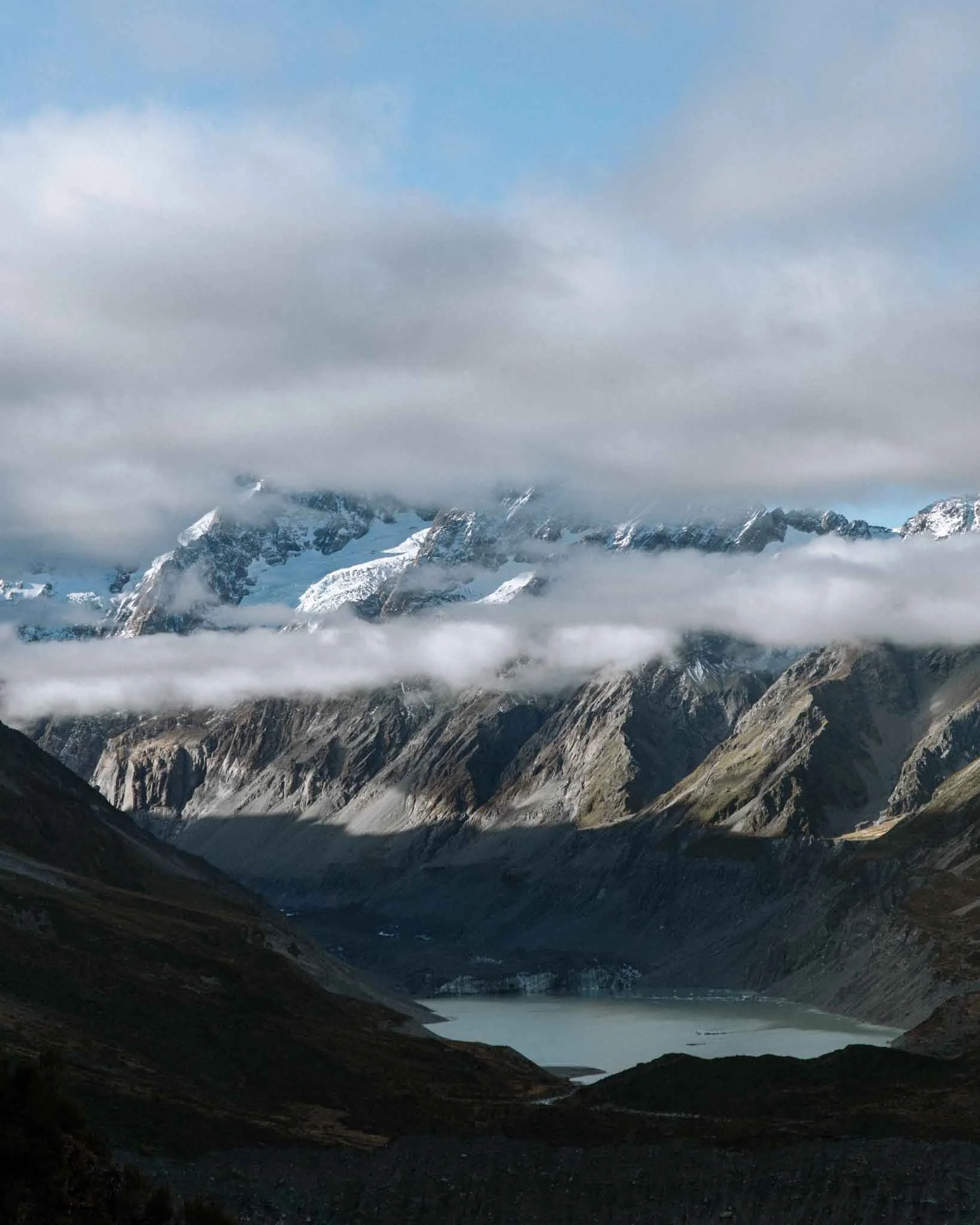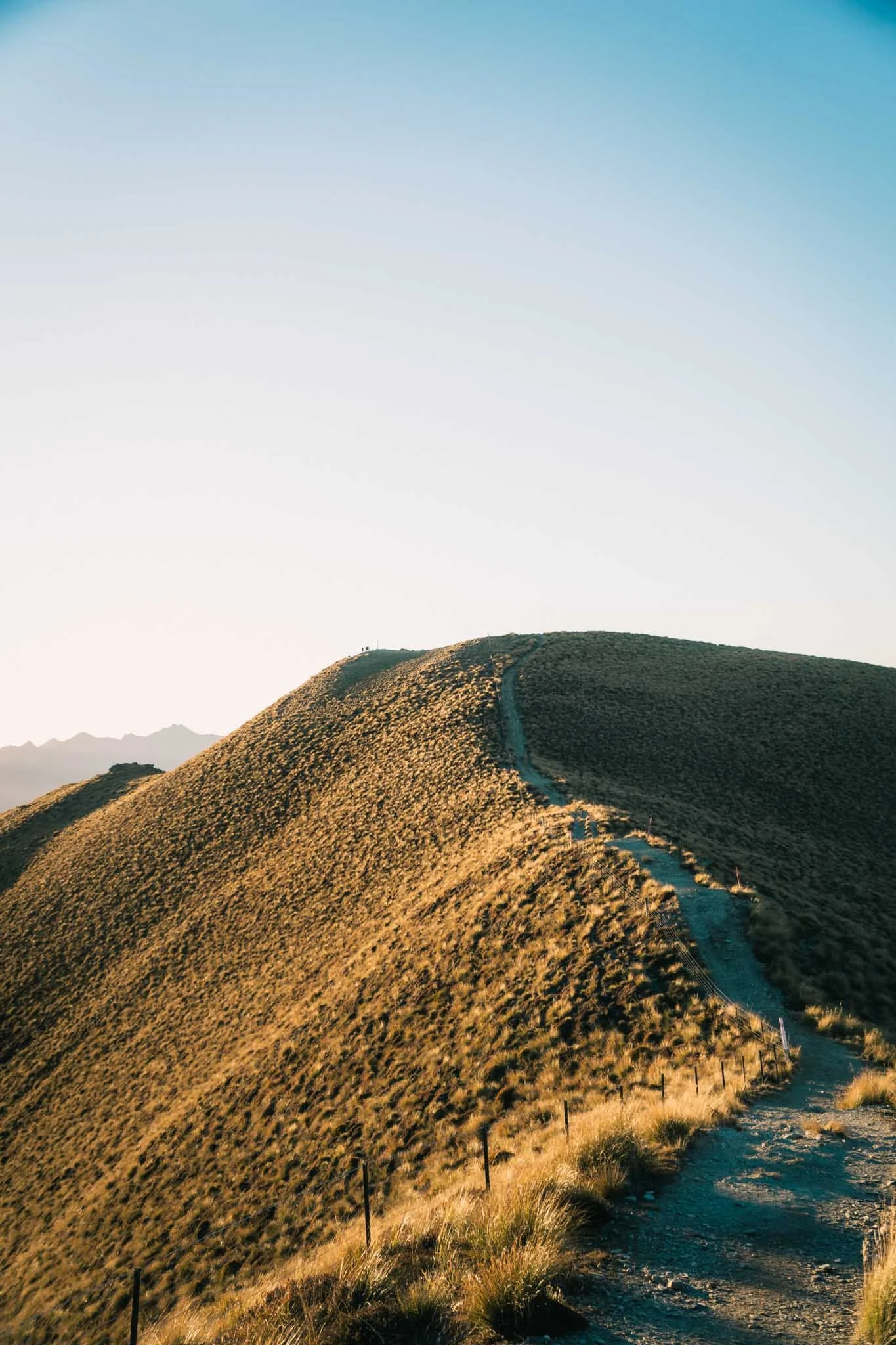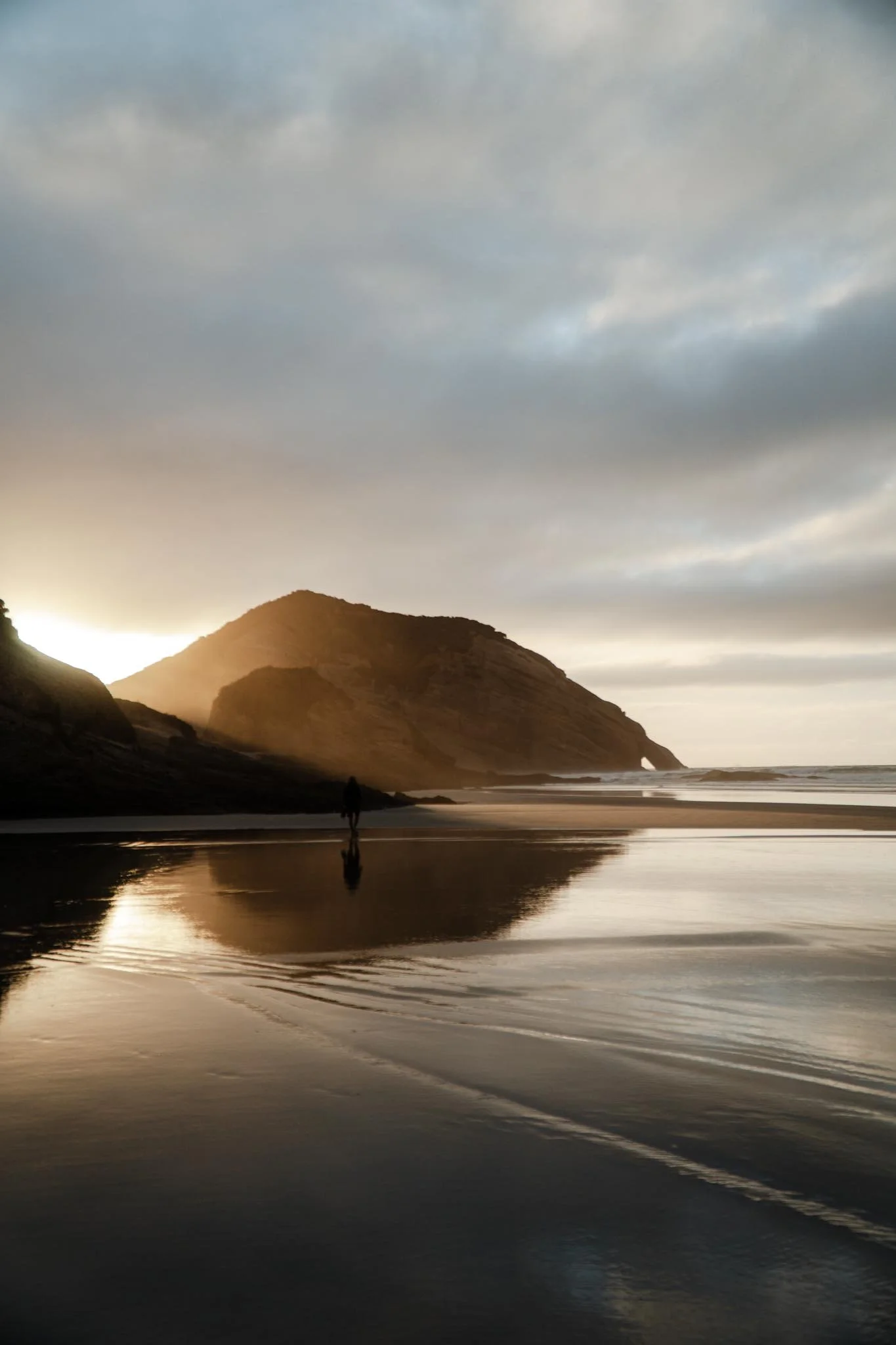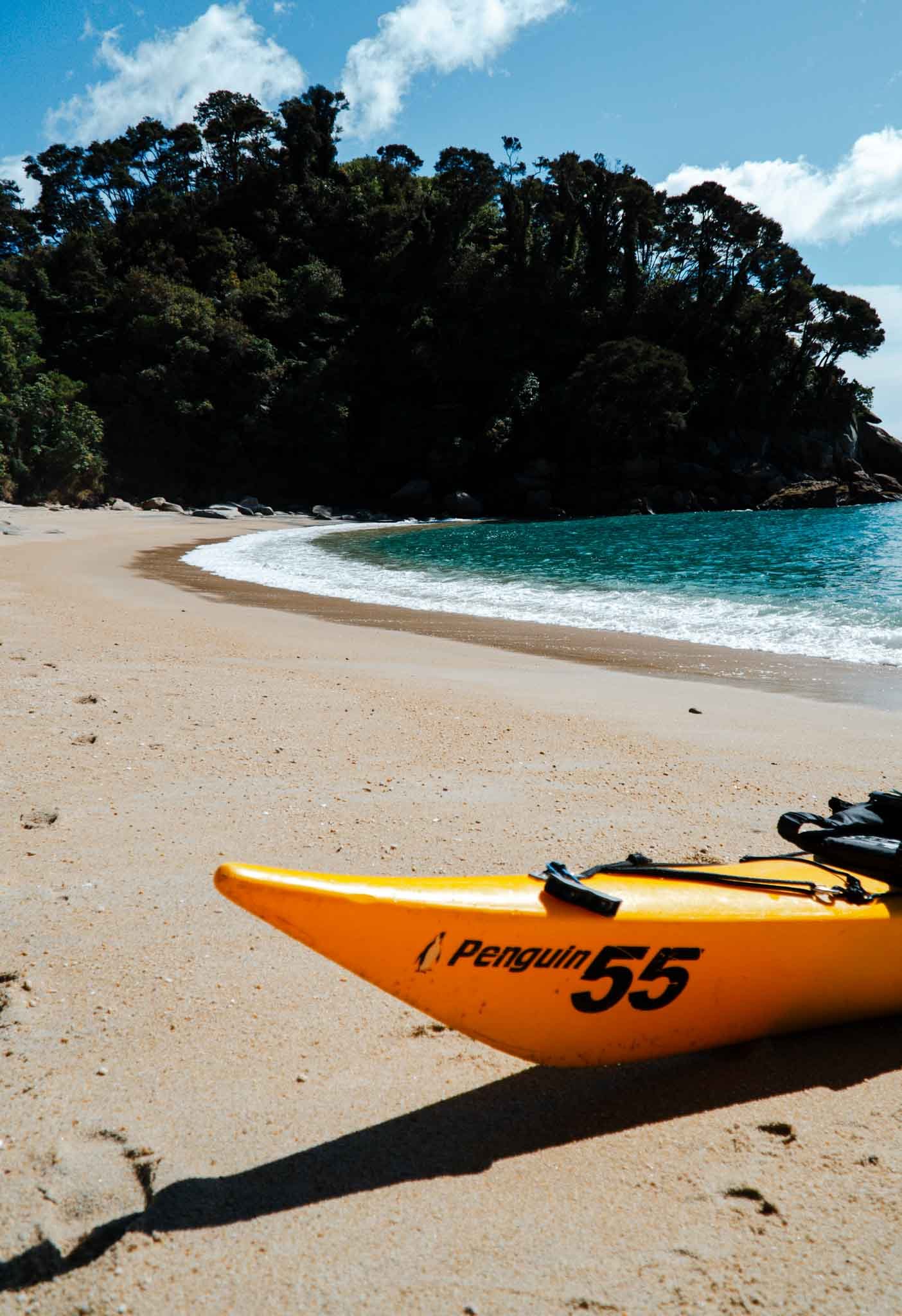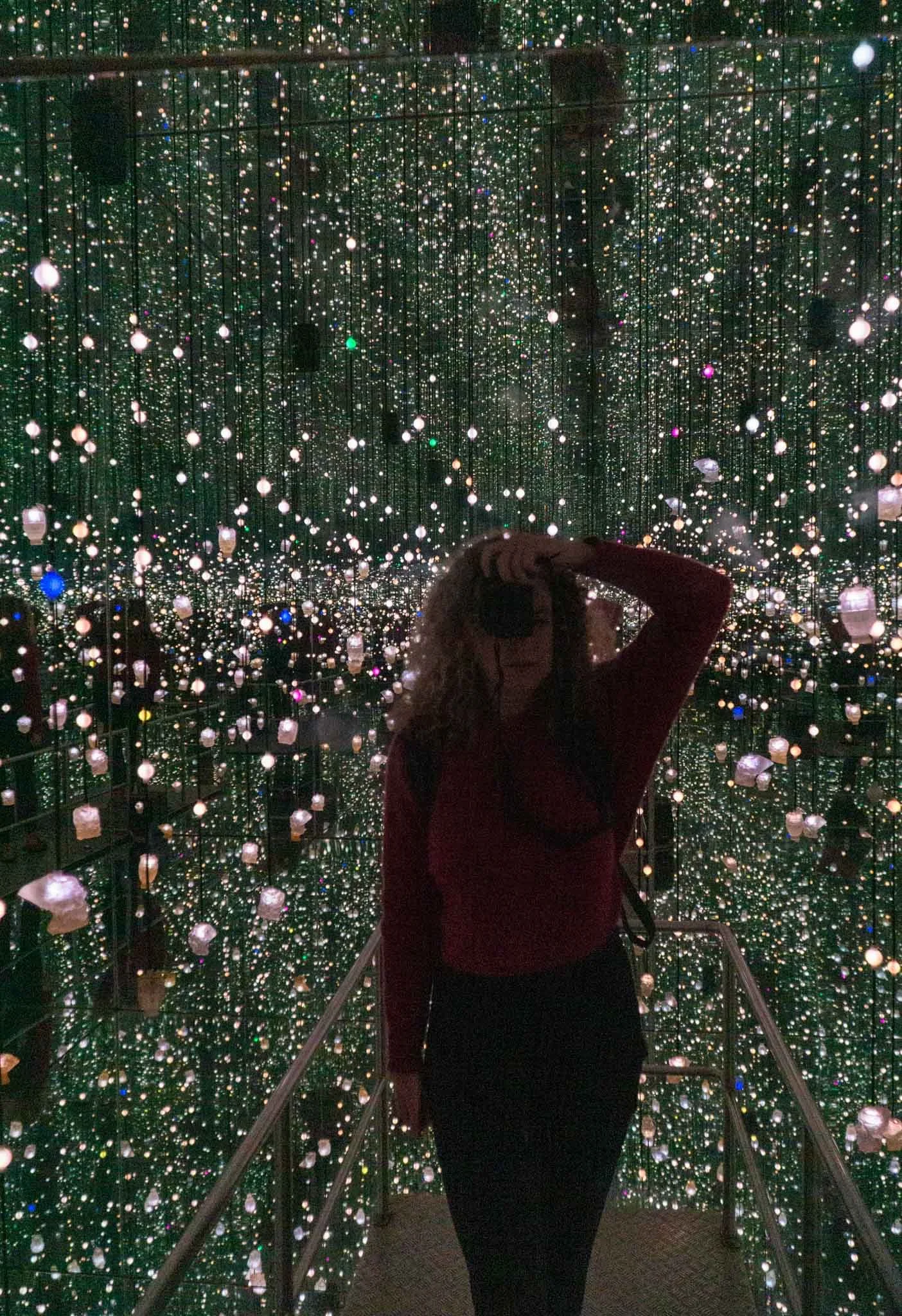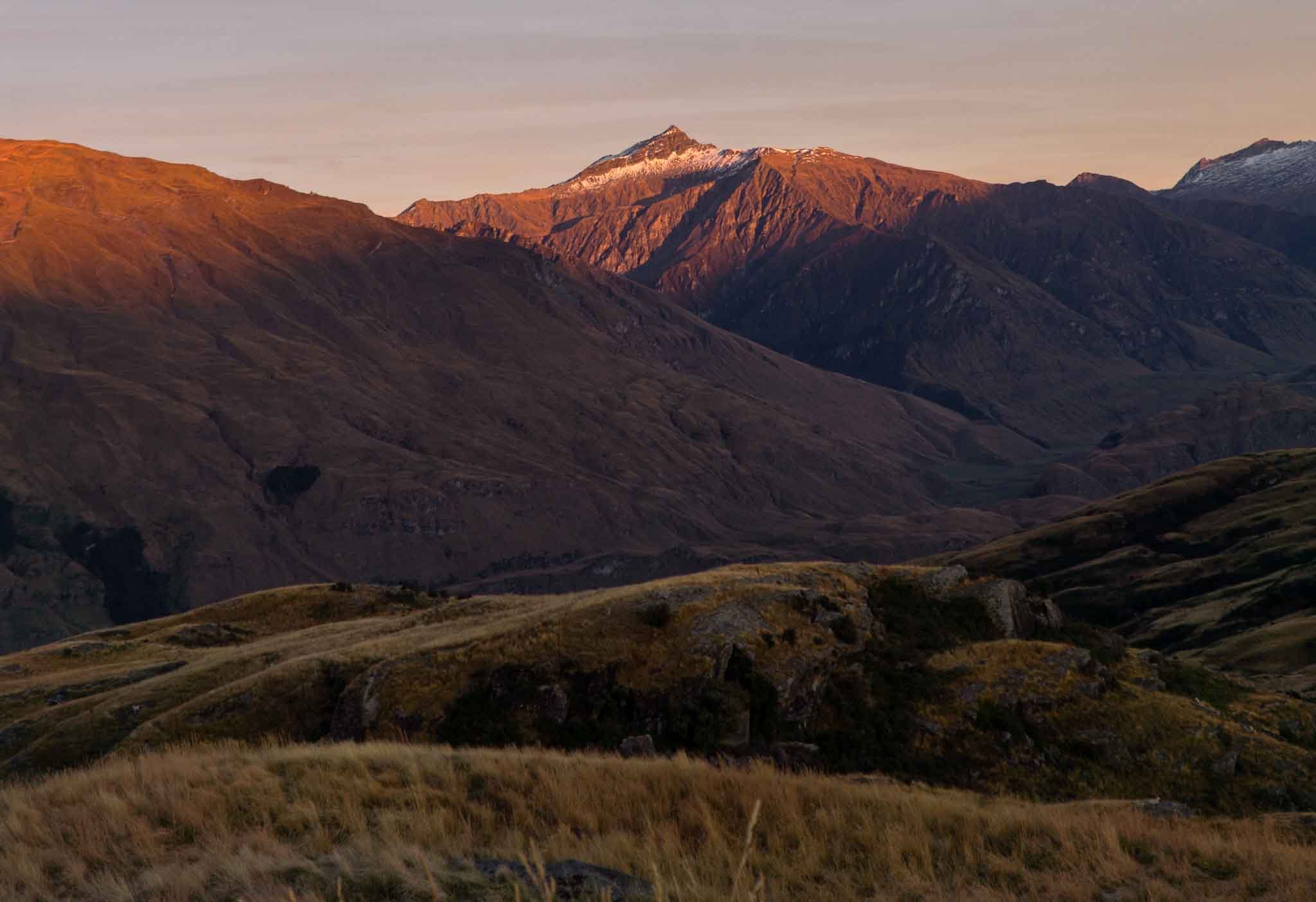28 beautiful places to go + things to do in the South Island
hiking to the earnslaw burn glacier, near glenorchy
The South Island — where to begin.
Maybe I’ll start with the mountains, the giant, raw mountains that form a rough seam down the middle of the island. Coming from the North Island, where the highest points are the pointy tips of old volcanoes, the size and sweep of the Southern Alps leaves me awestruck every time.
The road to Aoraki/Mount Cook
The mountains that leave me speechless
And after the mountains?
You should know that the South Island is large, larger than it looks on a map. If you only have a few days, or a week, you’ll probably want to stick to Christchurch and Queenstown.
With 10 days or more, you could do a loop — throw in the west coast, or the golden beaches of Abel Tasman.
There are many, many beautiful places in the South Island, almost too many to choose from (and I apologise in advance for the length of this list).
The good news is that the South Island doesn’t have that many roads. There’s one main route down the east coast from Picton to Christchurch, more or less one road to Queenstown. Same thing for the west coast, and if you want to go up to Nelson.
moutains in fiordland, forever covered in cloud
So while you can expect to be moving a lot, you’ll always be heading in a logical direction, to some other wonderful place.
Don’t plan to spend more than a couple of nights anywhere (and if you do want that, it will most likely be Queenstown). The South Island is made for road tripping.
I haven’t done everything in the South Island, not even close — you will never get me to do a bungy jump or canyon swing — but I have seen a lot of Te Waipounamu. I’ve driven up and down the entire South Island and still can’t get enough of the hikes, lakes, forests, and camping.
This is a list of my favourite destinations in the South Island, including must-sees and unique places to visit.
This isn’t an exhaustive list of South Island attractions, but a curated look at what someone who loves food, culture, and the outdoors might enjoy. These are all places I have been to myself and would recommend to visitors.
Disclosure: This page has affiliate links, which means I may make a commission if you make a purchase through those links, at no extra cost to you. Thanks for your support.
If you plan on renting a car, I compare prices on Discover Cars and usually go with the cheapest option (the service is pretty much the same across companies, unless you want to drop off in a smaller destination, like Greymouth).
For campervans and motorhomes, Motorhome Republic is the best site for comparing vehicles and prices.
The regions and planning your route
the catlins, on the south east coast, is a beautiful camping destination
I’ve broken this list down into regions, so you can get a sense of what to see where — each region (and I’ve divided them up pretty roughly) has something very different to offer.
You can use these links to jump ahead, or just scroll through — if you’re not sure where to go yet, I’ve tried to add plenty of pictures from these places, for your visual inspiration.
Fiordland and the Southern Alps — where you’ll find Queenstown, Milford Sound, and Aoraki/Mount Cook
The top of the South — Nelson and Marlborough — For golden beaches and watery adventures along the coast
Christchurch and the East Coast of the South Island — Whales, penguins, and the remote Catlins
The West Coast — Rainforested and remote, famous for glaciers and ideal for campervan trips
The South Island is vast — it would take more than 12 hours to drive from Picton to Bluff without stopping.
While popular destinations like Milford Sound and Aoraki/Mount Cook can be very busy, you can head to alternative places, like the West Coast, to find hikes and views where you’re the only one around.
If you catch the ferry down from the North Island, you’ll arrive in Picton. If you fly into the South Island, you’ll probably arrive into either Christchurch or Queenstown (the two main airports).
Most road trips around the South Island link up these points. Check out these itineraries for inspiration:
Fiordland and the Southern Alps
fiordland forests are some of the densest, wettest, and wildest in the country
This region — which very broadly covers the lower South Western corner of the South Island — is where you can find some of the most iconic South Island attractions.
This area encompasses Aoraki/Mount Cook National Park, Queenstown, and the mighty Milford Sound; the places you will probably recognise from photos and most likely what inspired you to visit our tiny country at the bottom of the world.
Queenstown — an adventure hub and likely base for day trips
queenstown lakefront, early morning
Queenstown is New Zealand’s most famous town, home to a dizzying array of adventure activities.
Here you can find the first commercial bungy jump, opportunities to jet boat up remote rivers, and some of the best sky diving locations in the world.
Located on the shore of Lake Wakatipu, surrounded by the Remarkables mountain ranges, Queenstown is stunning — if you can, sit by a window if you fly in, so you can take in the views.
photo — destination queenstown
A word of warning — Queenstown is very busy. It’s a commercial hub, so it feels more like a classic tourist town than anywhere else in the South Island. Personally, I prefer quieter places.
I think I’m in the minority though, as most people love Queenstown and the lively nightlife you can find there.
central otago vineyards are a queenstown highlight
skipper’s canyon is a hair raising adventure
The Central Otago wine region covers the valleys and plains near Queenstown and Wanaka. From Queenstown, you can explore the wineries in the Gibbston region, which lies in the valley between Queenstown and Cromwell. I particularly like Amisfield, Peregrine, and the range of vineyards on display at Kinross.
If wine isn’t your thing, get a taste of the South Island at the epic restaurants in Queenstown. Several of the wineries in the Central Otago region have incredible dining options (highlights include Amisfield and Mora Wines) where you can go for meals which highlight the produce of the Central Otago region.
Glenorchy is a small village around 45 minutes from Queenstown, set on the edge of Lake Wakatipu. There’s not much to do in the town itself — it’s the setting that’s worthwhile. Many of the things to do around Glenorchy involve hiking (Glenorchy near one end of the Routeburn Track) or exploring Lord of the Rings locations.
Milford Sound
Milford Sound might be the most famous place in the South Island.
The deep, dark sound, presided over by the iconic Mitre Peak, is an epic slice of Fiordland.
Head to Milford Sound to cruise or kayak on the inky waters, taking in the sheer cliffs and waterfalls that plunge into the sea.
Getting to Milford Sound is also part of the experience. Tour buses stop along the way, giving you a chance to see short walks and lookouts.
If you’re self driving, there are some excellent walks on the road to Milford Sound, including the Key Summit hike and Lake Marian.
Stay in Te Anau, to hike some or all of a Great Walk
luxmore hut on the kepler track
New Zealand has almost every kind of outdoor activity, but among the most unique are the 10 Great Walks.
These hikes (or tramps, to use local parlance) are 3-5 day tracks that pass through some of the country’s most incredible landscapes. Seven of the 10 Great Walks are found in the South Island, and three are accessible from Te Anau.
The Kepler Track follows the spine of a Fiordland mountain range, while the Routeburn Track crosses through both Fiordland and Mount Aspiring National Park.
The Milford Track is the most famous hike in New Zealand, crossing high passes and dense forest with the end of the trail arriving in the celebrated Milford Sound.
It does take a lot of organisation to tackle a Great Walk, as you need to book the huts in advance and they are notoriously popular.
However, you can experience the Great Walks by walking sections as day walks, with transport from Te Anau.
The Milford Sound track:
Take a water taxi from Te Anau Downs, hike to Clinton hut and back (3.5 hours return) and catch the water taxi back again.
The Kepler track:
Take a water taxi across the Brod Bay, hike up to Luxmore hut for the epic views, then walk down and catch the taxi back.
You can also walk from the Control Gates up to Luxmore, you will just be adding an extra 1.5 hours to your trip each way.
The Routeburn track:
Drive or catch a shuttle to the Divide, and from there you can walk up to Key Summit, Earland Falls, or even Lake Mackenzie if you’re game for a longer walk.
For more information on track transport for these day walks, check out Fiordland Outdoors.
Visit Aoraki/Mount Cook National Park to see our highest mountain
Home to New Zealand's highest peak, Aoraki Mount Cook National Park is an essential stop on a South Island trip.
From Mount Cook Village, you can access one of New Zealand’s best short walks — the Hooker Valley Track. This walk leads to a viewpoint of a Aoraki/Mount Cook and the Hooker glacier feeding into a lake.
Other walks in Aoraki/Mount Cook National park include a walk to a lookout from where you can view the Tasman Glacier, and an overnight hike to Mueller Hut.
If you’d prefer other modes of transport, you can also take a boat ride across the glacial lake to view the Tasman Glacier up close, or catch a helicopter up onto the ice to walk on the glacier.
WHERE TO STAY
Possibly the best place to stay in Mount Cook is the Hermitage Hotel, if it’s in your budget.
I have stayed in the Haka House Hostel and the White Horse Hill campground and loved both (from the campground, you can hear the glaciers cracking).
Visit Wanaka to hike
Wanaka is a lovely little mountain town by a lake, but the real reason to visit is to go hiking.
The Roy’s Peak walk is the premier thing to do near Wanaka. It’s an epic day walk for views of the lake and surrounding peaks.
Isthmus Peak is another epic hike near Lake Hawea. Climbing to this sweeping lookout point makes a great alternative to the popular Roy’s Peak hike, which can get very crowded.
If you don’t mind going a little further, Wanaka is also an ideal base for exploring Mount Aspiring National Park, which is home to some of the best hiking trails and most scenic backcountry huts in the whole South Island.
french ridge hut in mount aspiring national park
a very scenic longdrop toilet at french ridge hut
One of my favourite features of Mount Aspiring is the colour of the water in the park. Many of the rivers run bright blue, thanks to glaciers higher up in the mountains.
The water, combined with the incredible beech forests and high peaks of the park, make for epic hiking.
Some of my favourite walks in this national park include:
Hike to see Rob Roy Glacier
Walk to see the magnificent Blue Pools.
A few notes on the South Island’s alpine huts
The South Island is one of the best hiking destinations in the world.
There are countless hiking trails up and down the island, leading to glacier viewpoints, natural hot springs, deep river valleys and even the clearest freshwater lake in the world.
Like many other New Zealanders, I’m passionate about New Zealand’s backcountry huts. Scattered throughout the Southern Alps are some epic huts which capture the wild, adventurous essence of our country.
Hiking to a mountain hut and spending the night is an unbeatable South Island experience.
Some of my favourite huts include:
Mount Angelus hut in Nelson Lakes National Park
Mueller Hut in Aoraki Mount Cook National Park
Liverpool Hut in Mount Aspiring National Park
Mount Brown Hut on the West Coast
There are literally hundreds of huts in the South Island though.
To find one, you can look online at the DOC website, or drop into a DOC visitor centre to ask for recommendations. The visitor centres are always well worth visiting anyway, to check maps and weather conditions in the area.
Stop by Lake Pukaki and Lake Tekapo
The blue lakes of Pukaki and Tekapo lie like cat’s scratches across the Mackenzie district.
Both lakes are stunning to behold, thanks to their bright blue water. These lakes are fed by glaciers, which lends them an unreal blue colour. It also means they are ice cold.
Both lakes conveniently sit right next to a main road, making them easy pit stops on any road trip between Queenstown and Christchurch.
Lake Tekapo is more developed, with a small town on the lakefront offering a Four Square supermarket, a range of hotels, and activities ranging from kayaking to stargazing in hot pools.
There’s not much at Lake Pukaki aside from some freedom camping spots and the occasional luxury lodge, which is a large part of its appeal.
There is a small visitor centre where you can buy alpine salmon and have a picnic. It’s a nice spot from which to admire views of Aoraki/Mount Cook across the lake on a nice day.
WHERE TO STAY
In Lake Tekapo you can find hotel accommodation and budget backpackers. In Lake Pukaki, your options are a little more limited, unless you’re travelling in a campervan, in which case you can stay at what might be one of the best camping spots in the South Island — No More Pines Camping.
Stargazing in the Aoraki Mackenzie International Dark Sky Reserve is a highlight of the South Island.
The reserve has exceptionally clear night skies, and the area has a number of special lighting ordinances in place to protect the area from light pollution.
This makes the reserve an excellent place to go stargazing.
The Dark Sky Reserve covers a large part of the Mackenzie region — between Fairlie and Mount Cook, you’ll see signs that you’re on the ‘Starlight Highway.’
Tekapo, a small town located by a lake of the same name, is a popular location for stargazing tours.
From Tekapo you can visit the Mount Saint John Observatory and look at the night sky through telescopes, or take a smaller tour accompanied by hot chocolate and toasted marshmellows as you cosy up in blankets under the night sky.
As well as being a chance to get a clear look at the night sky, stargazing in Tekapo is a great introduction to the history and culture of the Ngāi Tahu iwi (tribe) who live in the area.
For Ngāi Tahu, the stars hold great importance — the first Māori navigators followed stars across the largest ocean in the world to reach New Zealand, so there are many histories and legends encoded in the stars.
The top of the South — Nelson and Marlborough
I hope you like nature, because getting splattered in mud, dusted in sea salt, bitten by sandflies and rinsed clean by lake water is all part of experiencing the South Island.
Visit Farewell Spit and watch a sunset at Wharariki Beach
THE ARCHWAY ISLANDS, OFF THE COAST OF WHARARIKI BEACH
Wharariki Beach, located on the northwest coast of the South Island, in the stunning Golden Bay region, is a vast stretch of windswept beach.
You can reach the beach via a short walk across sheep paddocks, before crossing the dunes piled at the back of the beach.
Wharariki beach is famous for its view of the Archway Islands just off the shore — you might recognise this view from a Windows 10 background.
Seals clamber over rocks strewn along one end of the beach, and seabirds wheel overhead.
It feels truly remote, and is spectacular at sunset.
Golden Bay is well worth visiting for more than just Wharariki Beach — in my view, it’s one of the most beautiful places in the South Island.
Cruise out to Puponga to discover a wild corner of Golden Bay.
Farewell Spit is a beautiful long arc of sand which acts as a beacon to migratory birds. There are short walks you can do around the base of Farewell Spit and the adjacent Puponga Farm Park. Hike to a lighthouse, meander along the tops of granite-coloured cliffs, or stop by Cape Farewell, the northernmost point of the South Island.
Some of the other stunning things to do in Golden Bay include:
Visiting the hippie town of Takaka
Hiking in Kahurangi National Park (the Heaphy Track ends in Golden Bay)
Swimming in crystal clear pools at Payne’s Ford
Visiting the Te Waikoropupū Springs
Explore the Marlborough Sounds
The Marlborough Sounds are a series of drowned valleys at the top of the South Island.
The watery maze of sounds is divided by green ridges of land which shelter calm bays and hide beautiful walking tracks.
One of the best ways to explore the Marlborough Sounds is to walk the Queen Charlotte Track.
The Queen Charlotte hike is a multi walk through the Marlborough Sounds. It’s a beautiful trek and accessible to hikers of different fitness levels, as you can send your overnight bag to your next stop via water taxi.
You can also spend the night in lodges along the trail, instead of the typical backcountry huts you encounter on overnight hikes in the South Island.
That means that after a day of walking through lush native forest and skirting around turquoise bays, you can have a hot shower, a real bed, and enjoy a meal at a waterfront restaurant.
The Marlborough Sounds are also a great camping destination.
The Elaine Bay campsite is lovely, and if you’re up for a drive, the French Pass campsite is absolutely stunning.
You have to drive quite far down a hair-raising gravel road to get there, but the campground is located right on a calm bay where sting rays glide peacefully up and down.
It feels like the end of the world, so if you love going places only locals go, you might like French Pass.
WHERE TO STAY
For a peaceful retreat, I highly recommend staying at Hopewell Lodge. The setting here is incredible, particularly the hot tub which is the perfect place from where to watch a sunrise. I loved swimming and kayaking from the lodge and enjoying the feeling of being away from it all.
If you’re camping, the Pelorus Brige Campground in the Marlborough region is one of my favourite campsites in the whole South Island.
Kayak, hike and swim your way through Abel Tasman National Park
Kayaking Abel Tasman means you can call in at deserted beaches
The best beaches in the South Island are found in Abel Tasman National Park.
With golden bays strung out along a coastline rich with native forest, Abel Tasman National Park is an epic place for camping, hiking, and kayaking.
The Abel Tasman Coast Track, one of New Zealand’s Great Walks, runs along the coast. There are great day walk options as well as the full multi-day trek.
I’ve been through Abel Tasman six times, most recently on a two day kayaking, one day hiking trip. It was a great mix of water and land.
I also love walking different sections of the coast track.
Most people explore Abel Tasman National Park from the end closest to Nelson and Kaiteriteri.
But, my favourite parts of the park are at the Golden Bay end. If you enter from this direction, you’ll find more secluded beaches and quieter trails than the Marahau end.
Hike the Mount Roberts circuit in Nelson Lakes National Park
Nelson Lakes National Park is one of the South Island’s more underrated destinations, but it’s well worth a visit.
Stop at Lake Rotoiti to see the beech-covered mountains rising around the lake.
If you’re up for a hike walk the Mount Roberts Circuit (5 hours). This loop walk gives you awesome views of the lakes and wider national park.
This is one of the best day walks near Nelson.
For longer treks, the walk along the Mount Robert Ridge to Angelus Hut is one of my favourite hikes in the whole South Island.
There’s also the epic Travers Sabine Circuit, a 5-6 day hike through the park with the option of making a side trip to the Blue Lake, famous for having the clearest freshwater in the world.
Christchurch and the East Coast of the South Island
This region covers Christchurch and the plains that roll out from the city, as well as Kaikoura and the north eastern coast. I’ve also added in the lower eastern coast, because that makes geographical sense to me.
Visit Christchurch, the Garden City
Christchurch is the biggest city in the South Island, so you’ll probably pass through at some point.
I’m not much of a city person, but I like Christchurch — there’s a grittiness about the city that gives it character. I enjoyed the city’s cafes (there is a big brunch scene here) and exploring the Botanic Gardens.
If you want to see the highlights in a short space of time, take the Christchurch tram for a tiki tour.
Better yet, get the Christchurch Pass (tram, punt ride, and gondola) to tick off the top attractions in Christchurch, while covering a lot of the city.
See dolphins, whales, and seals in Kaikoura
I spotted these dolphins from the road just to the south of Kaikoura town — you can often see dolphins frolicking from the roadside.
If you want to spot wildlife, Kaikoura is one of the best places to go in the South Island.
This little seaside town teems with marine wildlife and sea birds.
Check out the Kaikoura Peninsula Walkway, a one-way walk from where you can look down on seals lounging around rocks in impressive numbers.
I visited Kaikoura in the middle of winter, and stopped by to do this walk one evening. The car park was nearly empty — of cars that is. With the people gone, resident seals were hopping around the tarmac.
I also love this walk for the views back toward the Kaikōura Ranges.
Kaikoura is also famous for whale watching. Sperm whales live off the coast all year round, and from June to July you can also see humpback whales as they migrate north away from Antarctica’s freezing waters.
Rising behind Kaikoura are mighty mountains, which wear a mantle of snow in winter.
If you like hiking, check out the trail up to Mount Fyffe. It’s a great day walk with views up and down the coast of the South Island. In August, the track was knee deep in snow which only made it more fun.
Kaikoura is famous for crayfish. You can try freshly caught crayfish from roadside food stops like the famous Nin’s Bin.
Oamaru
Inside the portal at Steampunk HQ
My favourite town in the South Island is Oamaru — it took me completely by surprise.
The town has a Victorian precinct with buildings shaped from white limestone, which gives it a unique aesthetic. But what truly makes Oamaru unique is the Steampunk culture in the town.
If you’re not familiar with it, Steampunk is a science fiction concept where the future is steam powered. So, futuristic but also Victorian era inspired — Burning Man type goggles and steam trains that fly.
Steampunk HQ is great fun to visit, but even if you don’t go inside the exhibition you can enjoy the old-timey-but-futuristic shops around town.
Oamaru is also famous for blue and yellow-eyed penguin colonies, so it’s well worth a stop on a South Island trip.
The Catlins are the wild, wooded coastal corner of the lower south eastern South Island.
The area is famous for the picturesque Nugget Point Lighthouse, short walks to waterfalls, and remote bays.
Along this stretch of coastline you’ll find some epic campsites — if you’re travelling in a campervan, you’ll love the untamed feel of this part of the island.
A highlight is the Purakaunui Bay Campsite, a coastal campsite located at the foot of tall cliffs.
Some tips for camping in the South Island:
The South Island has epic campgrounds. Here’s how to make the most of them:
Make sure you pack insect repellent, to ward off sand flies.
Use the app Campermate to find campsites.
DOC campsites are the best option for budget and beautiful campgrounds.
There’s great freedom camping in the South Island, but in more popular areas (like around Queenstown) rules are strictly enforced, so make sure you know where you can legally camp to avoid fines.
Some of my other favourite camping spots in the South Island are Pelorus Bridge Campground in Marlborough, Gillespies Beach on the West Coast, and Gentle Annies, also on the West Coast.
The West Coast
The highlights of the West Coast of the South Island are the twin glaciers, Fox and Franz.
Despite the massive loss of ice in the past decade, both glaciers are incredibly impressive.
You can follow short walks to viewpoints to see the glaciers, or take a heli hike to walk on the ice.
For more adventurous hikers, you can hike to peaks close to the glaciers — Mount Fox near Fox Glacier, or Alex Knob near Franz Josef — to get a look at the rivers of ice.
Southern Alps — home of glaciers
If you like glaciers, you can see them in other parts of the South Island, too.
Hike the Rees Dart or Cascade Saddle Tracks to see the mighty Dart Glacier.
Take a helicopter ride to the Tasman Glacier in Aoraki/Mount Cook National Park.
Hike up to Brewster Hut and see the Brewster Glacier while you’re there — possibly my all time favourite thing to do in the South Island, but it’s only for experienced hikers.
Hike in to see the Earnslaw Burn glacier, or take a heli ride instead to save yourself the 5 hour tough hike.
Bathe in mountain hot springs
Maruia Hot Springs are my favourite natural hot pools to visit in the South Island.
These hot springs are fed with naturally thermal water spilling out of the mountains high in Lewis Pass.
The setting has an element of the fairytale about Maruia Hot Springs. Something about driving the narrow Lewis Pass road, following twists and turns through the dark beech forest until the isolated thermal pools suddenly appear out of the mist.
Cut off from mobile reception and miles from the nearest town, the spa has a zen-like atmosphere.
Bathing in the emerald pools exposed to the chill winter air, gazing down the river valley into passing sweeps of rain, is incredibly meditative.
See the Pancake Rocks at Punakaiki
Punakaiki is a small village on the west coast of the South Island, right on the edge of Paparoa National Park.
The drive from Greymouth up to Fox River is one of the most scenic drives in the whole country. The Pancake Rocks are one stop, but it’s worth heading up this way to enjoy the incredible coastal scenery.
The Punakaiki Pancake Rocks and Blowholes walk is a 20 minute loop around a well-maintained track. It can take a lot longer though, if you linger to admire the curious limestone formations.
The rocks have been weathered in such a way they resemble stacked pancakes. Set against the backdrop of the forested West Coast, these rock formations are an impressive sight.
The blowholes are fun too — at high tide, water surges through the rock caverns and bursts upwards into the air.
Another highlight of Punakaiki is the Porari River Trail.
The track follows the boulder-studded river through thick nikau forest. It’s a gorgeous walk, and you can stop and swim at a number of points.
The track eventually reaches the Inland Pack Track, and you can either turn around and head back or make a loop by following the Inland Pack Track around to where it exits by the Punakaiki River.
The Porari River Trail is the final section of the Paparoa Track, so you get to experience one of the main highlights of this Great Walk.
Go camping at Gentle Annie’s in Mokihinui on the West Coast
Gentle Annie’s Campground is a beautiful, sprawling green space set where the Mokihinui River meets the sea. The beach here is strewn with driftwood, which is occasionally scraped together for sculptures or bonfires.
Sunsets are spectacular, and if you walk down the beach to Gentle Annie Point you’ll find a clever maze crafted out of trees. If you can find your way through, you’ll emerge to a stunning sunset lookout point.
Visit Okarito
Tiny Ōkārito is a sleeping beauty. The main activity here is kayaking the surreal Ōkārito Lagoon in search of ethereal white herons.
The Ōkārito Coastal Walk is also a great way to take in the surreal landscapes of wetlands, coastal forest, and mountains. The track runs high along a bluff before arriving at a tannin-dark lagoon. If it’s low tide, you can loop back along the beach and keep an eye out for Hector's dolphins playing in the waves.
Right by the beach is a small, community run campground, the perfect place to spend a night or two.
Stop in Arthur’s Pass
Arthur’s Pass is a lush, green, often wet stop with keas calling from the low mists. I loved the small former tunneler’s cottages that line the road through the pass.
The drive down to the West Coast is increddible and throws into sharp relief the differences in climate between both coasts of the South Island. Leaving the golden, arid plains behind you’ll find yourself in the thick forests of the West Coast.
A quick reminder: If you’re attempting the Avalanche Peak hike or any other high altitude South Island hike, to always check the weather and only go if the conditions are right — fast changing mountain weather is one of the most dangerous parts of travelling the South Island.
The South Island vs the North Island
There aren’t many big towns in the South Island — more people live in Auckland than the entire South Island.
But you will find some lovely towns with gold mining heritage, and of course thriving adventure hubs like Queenstown and Wanaka.
If you have limited time, you’re probably wondering which New Zealand island is better to visit.
It depends what you’re looking for.
The North Island is known for its larger cities, like Auckland and Wellington, and for having a stronger Maori cultural presence in regions like Rotorua, the East Cape, and Taranaki.
It also has more geothermal activity, and epic beaches all around the island.
The South Island is famous for its incredible landscapes, which include fjords, glaciers, mountains, lakes, and rolling high country hills.
I prefer hiking in the South Island, and it’s also more popular for adventure sports like pack rafting and skiing.
Weather in the South Island
The South Island has a diverse range of climates and weather patterns due to its varying landscapes.
On the West Coast, a temperate rainforest climate prevails, characterised by mild temperatures and high rainfall throughout the year.
In Fiordland, a cool temperate oceanic climate dominates the weather, presenting cool and wet conditions with frequent rainfall. Winters in this region can be cold, often accompanied by snowfall, making it a hub for winter sports enthusiasts.
In Christchurch, summers are warm and dry, while winters can be cold, especially in alpine areas where snow is common.
If you plan on visiting the South Island, you’ll need to pack warmer clothes than you would for the North Island.
New Zealand essentials
SIM CARDS: I recommend getting a Skinny SIM card when you arrive or an Airalo eSIM
FIND WALKS AND HIKES: The DOC website is the best resource for all trails, scenic campsites, and mountain huts
BEST APPS: Campermate for finding campsites, Gaspy for saving money on petrol
Thanks for reading this far! I hope you found some inspiration for places to visit in the South Island, both highlights and some more off the beaten track adventures.
If you’re planning your trip to New Zealand, you might also find these articles helpful:
READ MORE
